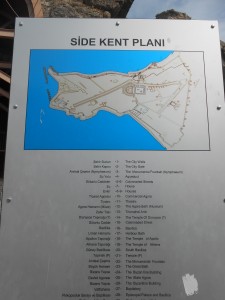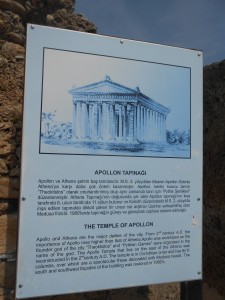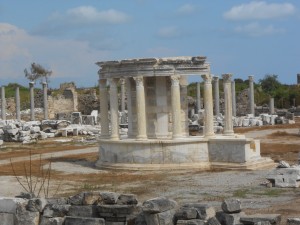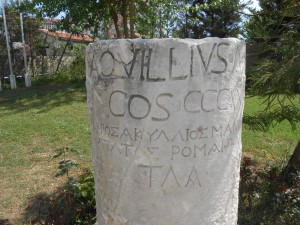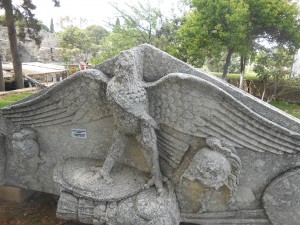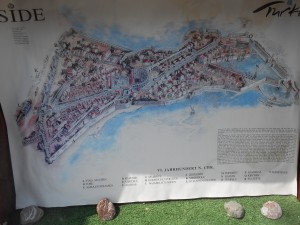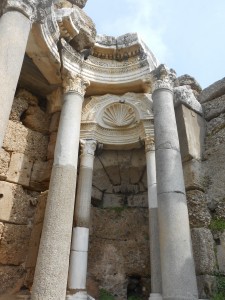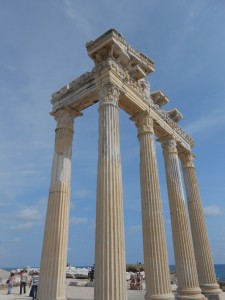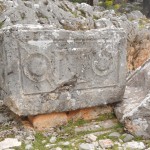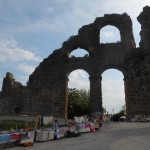As many trips as I have taken to Turkey,usually in May, but this time, since I am on sabbatical, in April, there are always more interesting Biblical, Greco-Roman, and early Christian sites to see. One such site is Side, on the coast where the western harbor for Pamphylia was. Paul and Barnabas may have landed here, though it’s more likely they landed in the eastern harbor of Pamphylia coming from Cyprus, which is at Antalya.
Mark and his wife Dindy live in a seaside apartment overlooking this very locale….. here’s a picture..
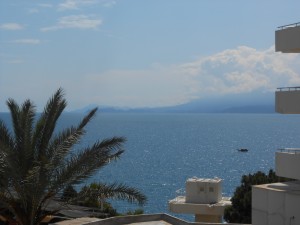
If this is indeed the locale where Paul landed he would have seen sights along the coast like this waterfall at Antalya….
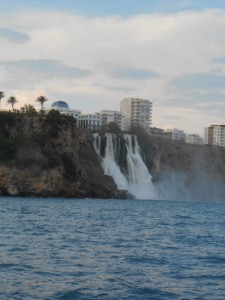
We took the pastors on a cruise down the coast to give them a sense of what it would be like to land at a harbor near Antalya. We know for a fact that Paul visited the area of Perge, next to which is Aspendos (see the next post) next to which is Side (pronounced See Day). When Paul arrived in a town he would pass many things, like the spice market….

But of course his real interest was in proclaiming the Gospel in venues where it could be heard and received, sometimes in synagogues, and sometimes in public places like agoras or forums. Here are the sort of places I mean in Side.
As you can see, Side, like many such towns, is built on a piece of land that juts out into the sea, with temples and prominent public buildings lining the streets.It is a mistake to underestimate how profoundly religious the ancients were. Temples got most of the best locales when things were being built.
Here is a depiction of what the Apollo temple would have looked like, and of course there were many other such temples in the public part of town, for instance this nice circular one…
And of course rich people wanted credit for helping to erect public monuments so there would be honorific columns praising their names (think donor plaques).
And what was increasingly obvious was the increasing Roman presence everywhere, as attested by this huge example of a monument to Roman legions…
The Romans added their layer of construction and government to the pre-existing Greek ones. Here’s a reconstruction of the whole Side lay out…
Some public buildings were built on the basis of taxes, but many of them were examples of leitourgoi— liturgies, which originally meant public works projects undertaken by wealthy citizens in exchange for honor and glory…not to mention name recognition. Here are the sorts of things they built…
Notice the important shell image at the nymphaeum. Water works were important, as water was a necessity everywhere, all the more by the sea where fresh water was not always in great supply.
The ancients made a statement about the important of religion, jurisprudence, public works by building things that lasted and lasted and lasted. What does it say about us that we are the disposable generation, building things that are garbage in no time flat?


